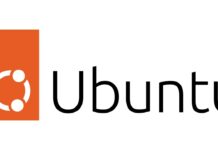Introduction to Electronic Data Interchange EDI
Electronic Data Interchange (EDI) is a technique of replacing business documents and statistics electronically between or with extra companions. It is an efficient way to alternate information and files in a standardized format, permitting corporations to communicate with each other quickly, as it should be, and securely.

EDI: Importance in commercial enterprise communication
1. EDI allows organizations to automate commercial enterprise tactics which include invoicing, ordering, delivery, billing, and payments.
2. It helps eliminate the need for manual information access, which not only reduces mistakes but also saves time and money.
3. By the use of EDI, businesses can quickly send orders, invoices, transport files, and different commercial enterprise files to each other securely.
4. EDI also facilitates quicker payments among organizations.
5. It is well-matched with all main software program systems inclusive of SAP, Oracle, Microsoft Dynamics, and extra.
Explanation of EDI File Formats
Electronic Data Interchange (EDI) is a form of structured records exchange that permits distinctive organizations to electronically exchange commercial enterprise files without the want for manual intervention. It is used by agencies to streamline their enterprise operations and decrease expenses related to traditional paper-based procedures. EDI solution providers have standardized a good way to make certain compatibility between structures, regardless of the software or hardware getting used.
• Their Function in EDI Records Trade
The EDI document codecs are designed with a particular intention in mind: to ensure information accuracy and integrity. These formats generally include section definitions, element identifiers, and codes to identify the form of records being exchanged. This facilitates lessening the capability for errors or misinterpretation while exchanging files between different corporations.
Additionally, EDI file codecs offer an extra layer of security, making sure that the most effective legal individuals and structures can get the right of entry to the statistics. Top EDI providers make it possible to fast and appropriately change big volumes of facts between multiple partners over a steady community.
This guarantees that all parties involved in a transaction have to get the right of entry to equal data, doing away with any potential confusion or miscommunication. By using EDI, corporations can keep time, reduce expenses, and make certain statistics accurate whilst changing enterprise files.
Also Read- How to Download Files From Google Drive?
Common EDI Document Code
EDI (Electronic Data Interchange) is a widely used approach to Electronic Database Exchange that allows agencies to trade information with each other in a standardized format.
Common EDI record codes encompass ANSI X12, EDIFACT, XML, and CSV
• ANSI X12 – Review and Usage
ANSI X12 is a standard for digital information interchange (EDI) that is especially used inside the United States. It gives a structure and format for business files, consisting of buy orders and invoices, to be exchanged among companies.
ANSI X12 evolved by using the Accredited Standards Committee (ASC) X12 and was followed as an American National Standard (ANS) in 1979. It is primarily based on the American National Standard Code for Information Interchange (ANSI ASC X12) and affords a not-unusual language for business communications.
ANSI X12 permits corporations to ship and get hold of EDI services providers in a steady format, no matter the hardware or software used by every organization.
Also Read- Scan, Edit And Share Documents For Less With iScanner For iPhone And iPad
ANSI X12: Advantages
• Supports an extensive variety of message sorts and requirements, making it suitable for lots of different industries.
• Allows for personalization of facts code
• Uses a trendy syntax to ensure consistency in EDI transactions.
EDIFACT – Evaluate and Utilization
EDIFACT, which stands for Electronic Data Interchange For Administration, Commerce, and Transport, is a global popular for the digital change of enterprise files. It changed into created by using the United Nations in 1987 to facilitate the international trade of information among trading companions.
EDIFACT has emerged as one of the most extensively used standards within the world for statistics interchange and is now utilized in over 50 nations.
EDIFACT: Advantages
• Widely used for worldwide exchange, with many exceptional messages.
• Most messaging protocols are well documented.
EDIFACT: Disadvantages
• Not as customizable as different EDI formats.
XML – Evaluate and Utilization
EDIFACT gives an efficient manner of replacing information between unique structures, in addition to the ability to save records in an established format.
XML became advanced via the World Wide Web Consortium (W3C) and is a popular layout for EDI consulting services and facts exchange. XML documents are organized with the usage of factors, attributes, and tags, which permit the easy transfer of information among systems without requiring any transformations or custom coding.
XML is frequently used in internet packages, mobile programs, databases, and other software to shop and alternate information.
XML: Advantages
• XML encompasses the reality that it is platform-unbiased and extensible, making it easy to transfer information between extraordinary applications.
• It also supports Unicode which permits the illustration of without a doubt any language in an unmarried document.
• XML is human-readable and may be written without complicated coding information.
XML: Disadvantages
• One of the major Disadvantages is verbosity, as files have a tendency to turn out to be huge because of the number of tags required to nicely mark up the content material.
• Due to its open nature, it could be at risk of malicious content if not properly confirmed.
CSV – Overview and Usage
CSV (Comma Separated Values) is a record layout generally used to save and switch tabular facts between exclusive programs, databases, and packages. It shops information in a plain-textual content layout this is easily readable by way of humans. Each line of the CSV file contains a document, with the values separated through commas.
CSV files are regularly used to trade information among applications, databases, and websites. They are normally used as a source for statistics evaluation and visualizations. CSV documents also can be imported into spreadsheet programs including Microsoft Excel and Google Sheets for additional evaluation.
Additionally, they can be used to save facts of contact statistics, patron orders, monetary transactions, and different kinds of information. One of the most popular data codecs used these days is CSV (Comma Separated Values). This format has many benefits, in addition to some risks.
CSV Advantages:
• One of the biggest benefits of CSV is that it could be effortlessly read via any form of software, meaning that you don’t need to buy high-priced applications to view your records.
• CSV files are fantastically small in length, making them clean to switch or store.
• Data saved in a CSV record can be fast imported into different databases and spreadsheet packages.
CSV Disadvantages:
• CSV files might also contain errors if not nicely formatted because of their reliance on commas and other delimiters to split values.
• It isn’t always as secure as other codecs, because the facts are stored in simple textual content and may be without difficulty accessed or modified.
• The format no longer supports huge amounts of information, making it fallacious for complex packages.
Considerations for deciding on the Proper EDI Document Format for your Commercial Enterprise
1. Cost: When deciding on the right EDI file layout for your commercial enterprise, it’s critical to take into account the fee. Different EDI document formats have distinctive charges related to them, so it’s essential to research and compare fees before making a decision.
2. Security: Security should be a primary consideration whilst deciding on an EDI report layout for your commercial enterprise. Make sure to pick an EDI file format that is stable and offers encryption abilities.
3. Ease of Use: It is crucial to pick out an EDI record layout that is easy to use and apprehend. If the format is just too complicated, it may be tough for users to utilize it efficiently.
4. Compatibility: When deciding on an EDI report format, it’s essential to ensure that the layout you choose is compatible with your existing systems and programs. This will allow for smoother integration and records exchange among exceptional platforms.
5. Customization: The proper EDI document layout needs to additionally offer customers the capability to customize their data for you to meet their unique desires. Different codecs can also provide extraordinary degrees of customization, so it is essential to investigate the available options before making a decision.
6. Scalability: When selecting an EDI file layout for your business, scalability must be a key attention. It is vital to pick a layout that could accommodate future booms and adjustments on your commercial enterprise.
Best Practices for Working with Distinctive EDI File Codecs
1. Learn File Format Specifications: Before beginning to paint with EDI document codecs, it’s miles important to research the specifics of each record layout. This includes information on its syntax, shape, and any applicable rules and regulations. Understanding those details can assist ensure that data is well formatted and transmitted successfully.
2. Use a Mapping Tool: To avoid mistakes and delays in EDI statistics exchanges, it’s essential to apply a mapping device to make sure that information fields are mapped correctly. This facilitates ensuring that statistics are nicely processed and avoids errors for the duration of the transmission.
3. Test Data Transmissions: Testing facts transmissions among unique structures is an important great exercise whilst operating with EDI document formats. Testing can assist identify any issues or capacity issues with the manner earlier than going live.
4. Monitor Data Exchanges: It is crucial to reveal statistics exchanges whilst the use of EDI report formats. This tracking can assist come across any mistakes or discrepancies within the statistics and make sure that it is being well transmitted and obtained.
5. Address Error Logs: It is likewise vital to check error logs regularly to pick out any issues with the EDI report format. Resolving errors quickly can help make certain the smooth operation of information exchanges.
Conclusion
In contemporary business operations, information Electronic Data Interchange (EDI) file codecs are of paramount significance. EDI document codecs offer a steady layout for businesses to trade information electronically between distinct agencies. This guarantees that the information exchanged is accurate, regular, and stable.
It also simplifies the undertaking of integrating disparate structures and streamlines verbal exchange techniques by way of getting rid of guide paperwork. Finally, agencies should display their EDI tactics on an ongoing basis to ensure clean operations.
In the end, expertise in EDI record formats is vital for businesses to maximize the blessings of EDI in modern business operations. Businesses should select a record layout that could accommodate future adjustments and ensure reliable communique throughout specific systems.
Moreover, satisfactory practices such as secure facts alternate, regular checking out and tracking have to additionally be applied so that you can make certain the safety and accuracy of EDI tactics. Understanding EDI report codecs is accordingly an important aspect for companies that try to remain aggressive and successful within the current enterprise landscape.


























![The Apex Legends Digital Issue Is Now Live! Apex Legends - Change Audio Language Without Changing Text [Guide]](https://www.hawkdive.com/media/5-Basic-Tips-To-Get-Better-On-Apex-Legends-1-218x150.jpg)









